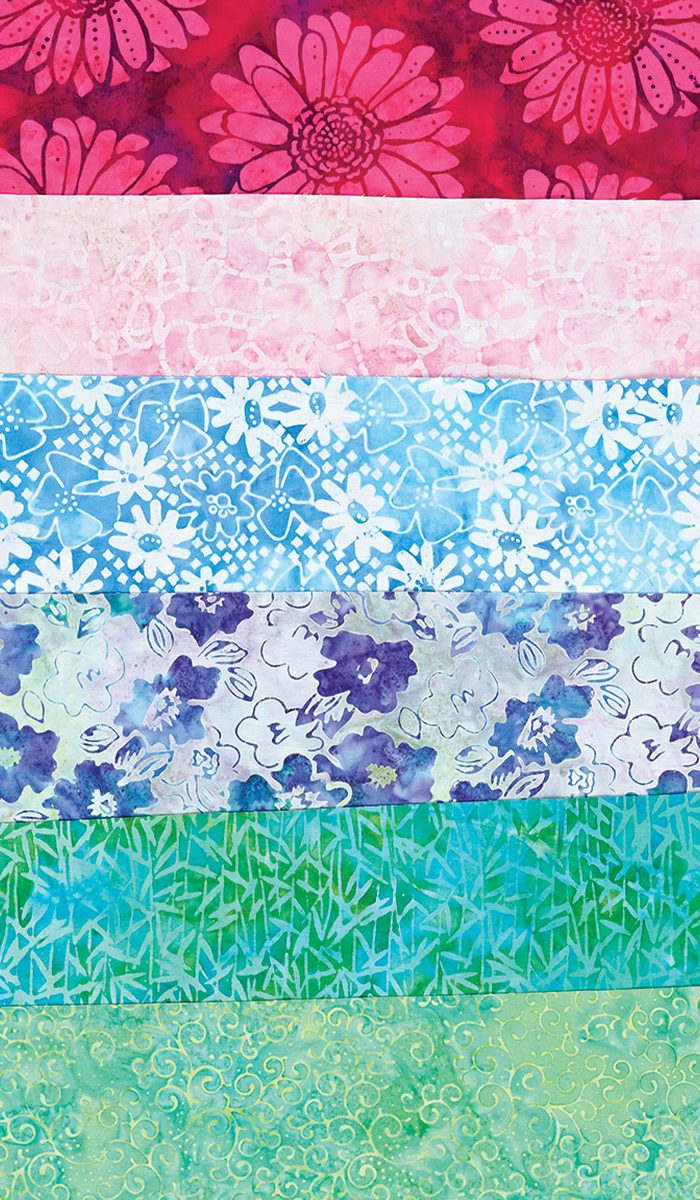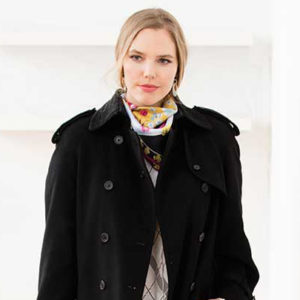Sewing With Artful Batiks
A traditional dyeing method produces complex prints
Classic batiks are created by a wax resist and overdyeing process. Textile historians trace their development to 13th century Indonesia. Artisans there used handmade copper stamps or “tjaps” to imprint wax patterns onto fabric. Wherever the wax penetrated the fabric, dye would not penetrate. Stamping, dyeing, washing out the wax, and repeating the process with additional dye hues creates vibrant layered prints with distinctive fine lines from cracks and fissures in the wax resist medium. Other methods of creating batik prints include painting or drawing wax on fabric, or using a process similar to screen-printing. Studying batik processes is a fascinating undertaking.
Print motifs usually consist of florals, leaves, or geometric shapes. Many handmade batiks are available, and tjaps are collectible as tools or art objects.
The majority of batiks are 100 percent cotton wovens, and you may find 100 percent rayon versions. Batiks make convenient travel fabrics since they breathe and the patterns tend to camouflage wrinkles. They are also commonly used in quilts, where the gorgeous prints offer a sophisticated substitute for solids. In garment sewing, use these fabrics for loose tops and dresses, full skirts, pull-on pants, and bathing suit cover-ups.
Preparation and cutting

Be sure to prewash batiks, as there may be some dye release and shrinkage. Pattern layout and cutting are straightforward.
Use a color-catcher: Collect excess dye from fabrics with Carbona Color Grabber sheets in the prewash.
Preshrink cotton batiks: Machine-wash in warm water on a regular cycle, and machine-dry on a regular cycle.
Be gentle with rayon versions: Rayon becomes unstable when wet, making it difficult to lay flat after laundering. Wash it alone on a gentle cycle in warm water. Take it out of the dryer before it is bone dry.
Check fabric drapability: Some batiks are softer than others. Check if the fabric is appropriate for your project by gathering a section in your hand and draping it over your stomach. If the fabric looks bulky now, it will not get any better with wear.
Plan a cutting layout: It is permissible to use a without-nap layout if the print is not directional . Save time by cutting a double thickness with a rotary cutter or scissors.
Get a good press: Set your iron to a temperature for cotton, and use steam.
Appropriate notions
Batik prints are typically lightweight fabrics, suitable for warm climates. Common tools and notions produce excellent results, and closure options are varied.
Marking tools: A Clover Chaco Liner or Pilot FriXion erasable ink pen are good choices.
Interfacing: Fusi-Knit is an excellent selection as it is lightweight and soft. It reinforces garment sections without adding bulk.
Thread: Use a polyester or cotton garment sewing thread.
Needle: For woven cotton and rayon batiks, an 80/12 universal needle works. For the uncommon jersey batik, look for a ballpoint needle of a similar gauge.
Stitch length: Apply the standard garment construction stitch length of 2.5 mm.
Presser foot: A standard presser foot works well. A walking foot is necessary only in special situations, such as when quilting multiple layers.
Closures: Take your pick from machine-sewn buttonholes or zippers, or have fun with decorative closures such as loops or frogs.
Stitching treatments
Batik has an even texture, is easy to press, and doesn’t require print matching, so it can offer a relaxing sewing experience. Here are some ideas for specific stitching techniques to apply.
Finish seam allowances neatly: Apply flat-felled seam treatments, or overlock the seam allowances on your serger.
Add standout topstitching: Stitch 1/8 inch from a finished edge using a 3.0 mm stitch length. Install a topstitching foot for accuracy. Try some samples with contrasting garment construction thread or topstitching thread to choose a treatment you favor.
Sew a quick topstitched hem: Double-fold a 1/4-inch hem and stitch it with a single needle. For the look of double topstitching, fold the same hem and sew with a double needle for wovens.
Sandra Betzina is the author of All New Fabric Savvy (The Taunton Press, 2017), from which this article is adapted.
Online retailers:
Further reading:
- Batik: Design, Style and History by Fiona Kerlogue and Tara Sosrowardoyo (Thames & Hudson, 2004)
- Silk Painting & Batik Project Book by Susie Stokoe (Southwater, 2015)
































Purposeful article! I've been using batiks for not just quilting, table runners, and other household accessories, but also blouses, and masks (needed for the pandemic of 2020+) for a number of years.